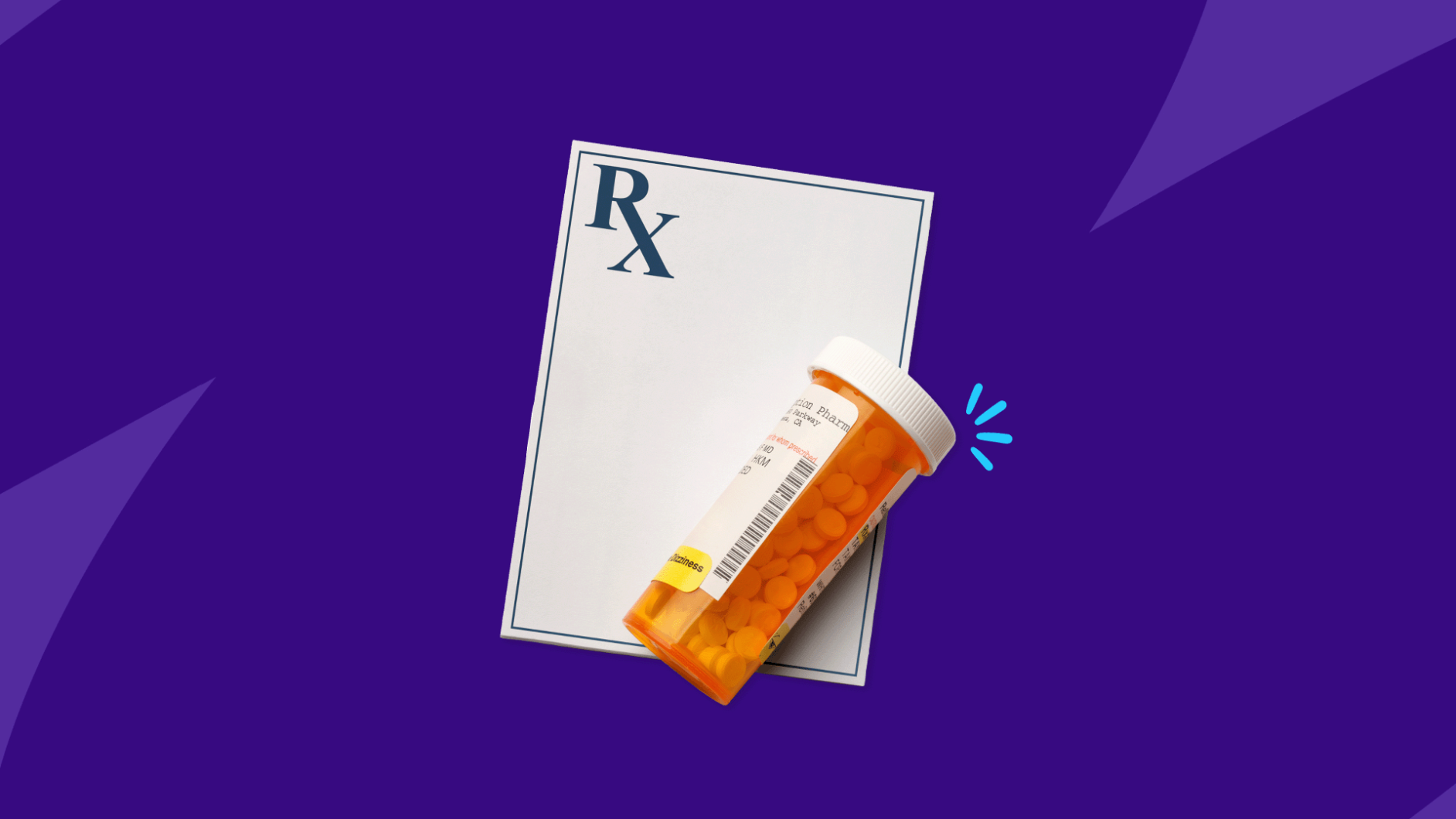Common diazepam side effects | Serious side effects | Impairment | Side effects timeline | Contraindications | Warnings | Interactions | How to avoid side effects | How to treat side effects
Diazepam is known to most people as Valium, its brand-name version, but it is usually prescribed as a generic. Considered a sedative, anti-anxiety medication, and anticonvulsant, diazepam is a benzodiazepine that slows down the nerves in the brain and spinal cord. Healthcare professionals use it to treat anxiety disorders, alcohol withdrawal, seizures, muscle spasms, and as a sedative for medical procedures. Healthcare providers may also prescribe diazepam off-label to treat insomnia, sleepwalking, sleep terrors, serotonin syndrome, and spasticity with cerebral palsy. Most people will take diazepam as a tablet, but it can also be administered as a nasal spray, rectal gel, or injection. Diazepam is a powerful sedative, so expect to experience some side effects when taking it.
RELATED: What is diazepam?
Common side effects of diazepam
By far, the most common side effects of diazepam are drowsiness, tiredness, and muscle weakness. In order of incidence, the most common side effects of diazepam are:
- Drowsiness
- Fatigue
- Muscle weakness
- Problems with balance, walking, speaking, or swallowing
- Memory problems
- Changes in libido
- Weight changes
- Tremor
- Menstrual irregularities
- Urinary incontinence
- Urinary retention
- Headache
- Dizziness
- Skin rash
- Diarrhea
- Euphoria
- Mood changes
- Nasal irritation (nasal spray diazepam)
- Blood vessel dilation
- Airway closure and trouble breathing
- Double vision
- Dry mouth
- Low blood pressure
- Constipation
People receiving diazepam injections may experience side effects such as blood clots and swelling of the blood vessels around the injection site.
Serious side effects of diazepam
The most serious side effects of diazepam are:
- Slowed or shallow breathing (respiratory depression)
- Dependency
- Abuse
- Withdrawal
- Suicidal thoughts and behaviors
- Psychosis
- Seizures
- Slow heartbeat
- Low blood pressure
- Fainting
- Passing out due to blood not getting to the brain (cardiovascular collapse)
- Blood disorders
- Liver problems
Diazepam and impairment
Diazepam will cause some impairment in nearly everyone who takes the drug. Most commonly, people will feel drowsy, groggy, or tired. The incidence of drowsiness could be as high as 84%. About half of people taking the drug will feel worn out, and about a third will have problems with coordination, movement, or talking. Forty percent of people taking diazepam can also expect to have problems remembering new things like what they’ve recently done or where they’ve been. Memory impairment is significant and happens with just one dose. People taking diazepam should be aware of this and modify their activities accordingly to avoid falls, accidents, and injury. Driving is a particular risk and could result in an accident or DUI. People should also avoid other substances that cause impairment such as alcohol, marijuana, or drugs that affect the brain.
How soon do diazepam side effects start?
Diazepam begins working quickly after a dose is taken, typically in 15 to 60 minutes. The most commonly experienced side effects like drowsiness, fatigue, headache, incontinence, slowed heart rate, and problems with balance can start that early. Serious side effects as well as libido and weight changes are delayed side effects. Physical dependence, drug abuse, and withdrawal are most likely when the drug is taken daily for longer than one to two weeks.
How long do diazepam side effects last?
Healthcare providers are advised to give diazepam only for the short term because of the risk of dependence and abuse. For most people the side effects of diazepam will wear off after the last dose is taken. Diazepam is a long-acting drug, so it could take 12 or more hours before someone feels back to their baseline. The effects could linger for up to a week since it could take two or more weeks to completely clear a dose from the body.
What are the long-term side effects of diazepam?
Diazepam is only intended for short-term use. Long-term use risks causing physical dependency on the drug which can quickly lead to drug abuse. Long-term chronic use can lead to severe and prolonged withdrawal when the drug is discontinued. Finally, although it is not considered a side effect, recent research has shown that taking a benzodiazepine daily for three months or longer increases the risk of developing Alzheimer’s later in life.
Diazepam contraindications
Because of possible hazards, diazepam is never prescribed to people with:
- Myasthenia gravis
- Severe breathing problems
- Sleep apnea
- Severe liver disease
- Narrow-angle glaucoma
- Untreated open-angle glaucoma
- Any history of an allergic reaction to diazepam
Pregnancy
Diazepam is only used when absolutely necessary during pregnancy. It has been shown to cause birth defects in animals. In addition, the baby could be born with withdrawal symptoms or other issues.
Breastfeeding
Diazepam is not recommended when breastfeeding. The drug passes into human breast milk and can cause sedation and slowed breathing in a nursing infant.
Children
Diazepam is FDA-approved for use in children as young as 6 months old, but may be used in infants as young as 1 month old as an anti-seizure medication.
Seniors
People older than 65 are usually given the lowest possible dose for the shortest period possible. Seniors are more vulnerable to falls and injuries due to the sedative and motor control effects of diazepam. In addition, reduced liver function in the elderly could raise diazepam concentrations in the blood and prolong its effects, making side effects more likely.
Diazepam warnings
Healthcare providers have several serious concerns when prescribing diazepam.
Black box warning
The drug information included with diazepam has a black box warning about the risks of drug abuse, physical dependence, and the hazards of combining diazepam with opioids.
Cautions
Prescribers know that diazepam is a powerful and addictive drug, so they may be reluctant to prescribe it to some people. For others, they may need to minimize the amount of diazepam they prescribe or monitor more carefully for adverse effects.
- Substance abuse: Diazepam is a controlled substance because of its potential for abuse and addiction. Healthcare providers are warned to carefully screen patients with a history of drug or alcohol abuse. When they do prescribe diazepam to people with a history of drug abuse, they will usually minimize the prescription and watch for any signs that the drug is being diverted.
- Depression: Diazepam can cause people with depression or a history of suicide to start thinking about or planning suicide
- Trouble breathing: Because diazepam slows down breathing, it can cause problems in people who already have lung problems such as asthma or pneumonia.
- Kidney disease: The kidneys help to clear diazepam from the body, so people with kidney disease may require lower doses and closer monitoring for side effects.
- Liver disease: The liver breaks down diazepam, so people with mild to moderate liver dysfunction will get lower doses and be monitored more closely.
Abuse, dependence, and withdrawal
Diazepam is a Schedule IV controlled substance, so it has a high potential for abuse and addiction. The longer the drug is taken, the more likely a person will develop drug cravings and start misusing the drug. In addition, physical dependence and tolerance will develop if the drug is taken long enough. For this reason, diazepam is rarely prescribed for continual daily use.
Once dependency has developed, stopping the drug will precipitate withdrawal. Symptoms can be severe—even life-threatening—and typically persist for about two weeks. Among those taking diazepam for longer than four weeks, 10–15% will experience a protracted withdrawal that lasts anywhere from six to 18 months.
Overdose
Go to an emergency room or call the prescriber if too much diazepam is taken. An overdose can be deadly, especially if other drugs are involved like alcohol or opioids. Diazepam overdose can be treated with an antidote, flumazenil. People who have taken too much diazepam usually show symptoms such as extreme drowsiness, imbalance, lack of coordination, confusion, limp muscles, slow reflexes, slow or shallow breathing, and coma in the more severe cases.
Diazepam interactions
Healthcare providers are also concerned about other drugs when prescribing diazepam. In some cases, they may choose other treatment options. In other cases, they’ll either modify the dosages or keep a closer watch on adverse effects.
- Opioids: Combining opioids with diazepam should be avoided because of the risk of severe impairment, slowed breathing, and death.
- Central nervous system depressants: Combining diazepam with drugs that slow down the nervous system will only increase impairment and sedation. CNS depressants include other benzodiazepines such as Xanax (alprazolam), Klonopin (clonazepam), Restoril (temazepam),or Ativan (lorazepam), barbiturates, sleeping pills, antipsychotics, anticonvulsants, anxiety drugs, antidepressants such as Luvox (fluvoxamine), muscle relaxants, sedative antihistamines, monoamine oxidase inhibitors, and alcohol.
- Anti-seizure drugs: Although diazepam is used to control seizures in people with epilepsy, combining diazepam with anticonvulsants such as phenytoin may increase the frequency and severity of convulsive seizures.
- Drugs that block the metabolism of diazepam: Some drugs block the liver enzymes that break down diazepam, worsening its side effects. Healthcare professionals know these drugs and will adjust treatments or dosages accordingly.
How to avoid diazepam side effects
For the most part, completely avoiding side effects is not possible with diazepam. At the very least, most people will feel tired or drowsy to some extent. However, there are ways to keep side effects and impairment to a minimum.
1. Take diazepam as directed
For powerful drugs like diazepam, the first rule is to not take too many pills. Only take the dose prescribed. Only take it as instructed. Do not take extra pills for any reason.
2. Take diazepam as needed
Some people will be prescribed diazepam on an as-needed basis, usually to help with situational issues like airline flights. In those cases, only take the dose of diazepam when it’s needed. There may be other times you feel like taking a pill. Don’t do it.
3. Read the medication guide
Prescribers will tell patients to read the diazepam medication guide. It’s an insert that is either packaged with the drug or handed out by the pharmacist. It has invaluable information about side effects and when to get medical help. If there are any questions, talk to the pharmacist or the prescriber.
4. Tell the doctor about all medical conditions
The medication guide gives precise instructions as to what medical conditions the prescriber needs to know about. These are all conditions that could be worsened by taking diazepam. Here’s the complete list:
- Depression
- Mood problems
- Thoughts about suicide or a history of suicide
- Lung disease or trouble breathing
- Liver disease
- Kidney disease
- Pregnancy or plans to become pregnant
- Breastfeeding or any plans to breastfeed
To avoid an increased risk of side effects due to drug interactions, make sure the prescriber also has a complete picture of all the prescription drugs, over-the-counter medications, vitamins, and supplements being taken regularly.
4. Do not suddenly stop taking diazepam
If diazepam is being taken every day, don’t stop taking it until getting medical advice from the prescriber. It may be necessary to gradually decrease each day’s dose of diazepam to avoid withdrawal symptoms.
5. Don’t drink
Alcohol will only worsen problems like drowsiness, imbalance, memory problems, and slow breathing. For the same reason, avoid any drugs that cause sleepiness like over-the-counter antihistamines.
6. Avoid some common but risky activities like driving
Some level of impairment is a fact of life when taking diazepam. It could truly be dangerous to drive, operate machinery, or engage in any potentially hazardous activity when taking diazepam. For some people, it is never safe to drive right after a dose of diazepam. In fact, it may not be safe to drive for days following a dose. And if it’s not safe, it’s not legal, either. To avoid accidents, falls, and injuries, be aware of how the drug is affecting attention, focus, and coordination. Be responsible about driving and other risky activities.
How to treat side effects of diazepam
Drowsiness, tiredness, and “drunkenness”
Diazepam not only makes people drowsy, but it can also affect balance, coordination, and even the ability to speak, similar to what happens when people are drunk. When feeling tired, drowsy, or unable to balance or move right, the best solution is to sit down or lie down and ride it out. This should be planned ahead of time to avoid falling, having an accident, or getting hurt.
Suicidal thoughts and behaviors
Diazepam can cause some people to start thinking about suicide. People who are thinking about or planning suicide need immediate help from mental health professionals. Contact the prescriber or other healthcare professional if a person taking diazepam starts showing symptoms of suicidality including:
- Talk about suicide or death
- New or worsening depression
- New or worsening anxiety
- Noticeable mood changes
- Agitation, irritability, or restlessness
- Aggressive or hostile behaviors
- Violent behaviors
- Panic attacks
- Reckless or risk-taking behaviors
- Unusual or extreme increase in activity or talking
- Trouble sleeping
Sources
- Benzodiazepine use may raise the risk of Alzheimer’s disease, Harvard Health
- Diazepam, Epocrates
- Diazepam drug summary, Prescriber’s Digital Reference
- Diazepam nasal spray prescribing information, U.S. National Library of Medicine
- Diazepam tablet prescribing information, U.S. National Library of Medicine
- Protracted withdrawal syndrome (PWS), Benzodiazepine Information Coalition
- Valium tablet prescribing information, U.S. National Library of Medicine











